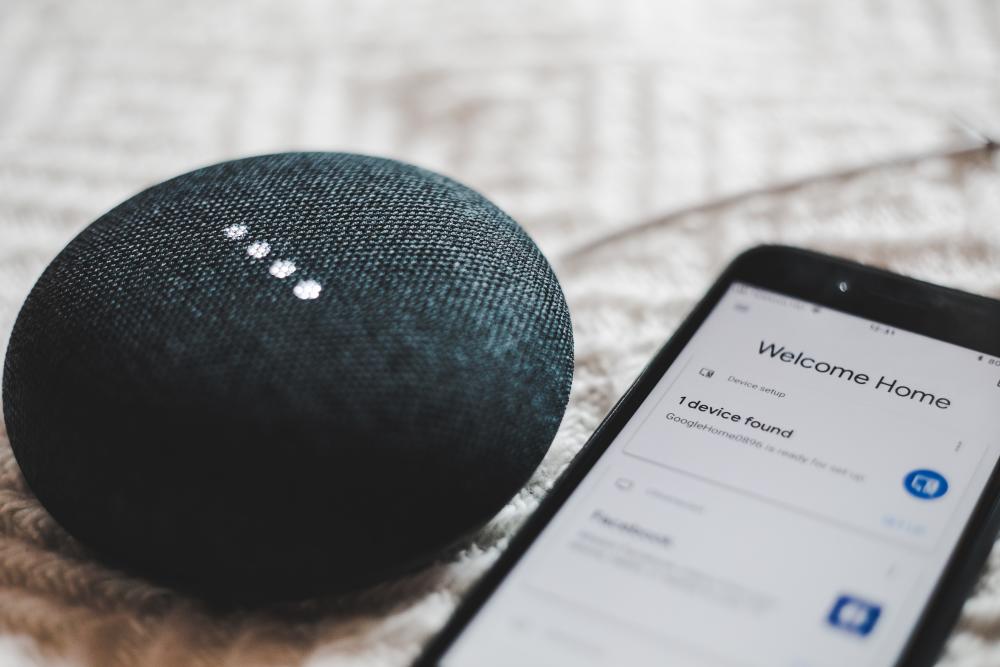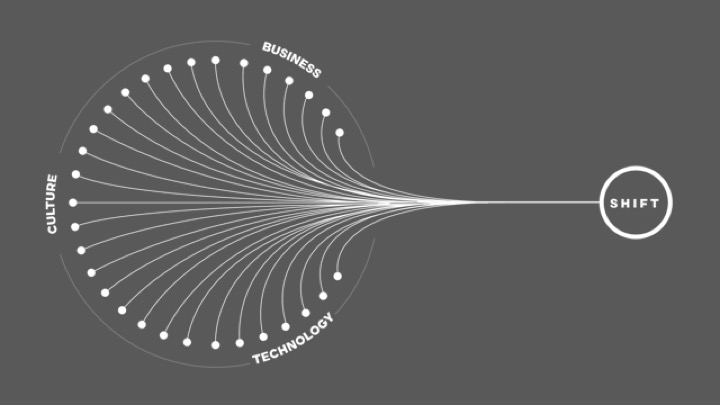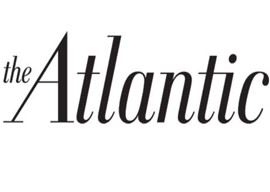
What is the future of the Internet of Things? We have been talking about the potential of a connected world for almost 20 years and, by some accounts, it hasn’t lived up to its tremendous promise. While there are countless connected consumer products available for purchase, we have yet to unlock their full potential. Many IoT prodcuts and services on the market today are highly innovative from a technology standpoint, but they lack a critical component for success. They have not sufficiently aligned their technological prowess with true human values. This leads to ideas that are technically impressive, but are doomed to fail because they are not providing significant and sustained value for consumers.
When companies get this right, it is immediately evident. Consider the recently released Medela Sonata breast pump. Medela partnered with Continuum to develop the product experience and explore opportunities for connectivity. Together, we identified a significant benefit for parents by making it an IoT product. With a connected breast pump, moms are linked to a support community, have access to helpful product use information, and are able to collect and manage important data about milk production, storage, and baby weight gain.
At Continuum, we refer to this as Meaningful Connectivity. We work to align human needs and values with today’s IoT technology solutions, and those we anticipate may exist in the future. In many ways, it is our job to help humanize technology. One way we accomplish this is through a process called backcasting. This approach helps companies break away from the incremental or failed innovation that can happen from a technology-first push when human values and needs aren’t sufficiently considered.

To support backcasting and identifying future opportunity spaces, Continuum created a group called NXT. NXT is obsessed with the future—constantly looking for lead indicators that will predict future scenarios. NXT does this by exploring culture, business, and technology trends and weaving together the seemingly disparate data points that ultimately create larger movements we call SHIFTS. NXT has supported dozens of IoT products and services. From this research, we have identified a number of significant SHIFTS that we believe will be critical for the future success in IoT. Below we describe how three SHIFTS are formed by these culture, business, and technology trends.

The Cultural Trend: New Family
The traditional family dynamic is being redefined. Over 25 percent of households consist of one person—up from 13 percent in 1960. In addition, parenthood is no longer a given as children are no longer one of the key reasons for marriage. And for those who do decide to have children, we’re seeing a proliferation of parenting arrangements, from gay couples to older parents to intentional single parents. How will connected devices need to evolve to support living alone and new family arrangements?
The Business Trend: We Own Nothing
In a digital era of remixing, sharing, and networking, ownership is more about owning a moment or experience than owning a physical thing. Businesses are now built on access and sharing—from Spotify to city-wide bike shares. How can companies help consumers own an experience? What are the touchpoints that will bring this experience to life beyond a physical product? We have seen traditionally product-focused companies placing significant effort in understanding how they can leverage technology to adapt from product to services and experiences.
The Technology Trend: Real-Time Everything
Have you met Dr. Google? Answers and information are accessible at all times thanks to our personal technology. We don’t need to do upfront research, and our expectation is that what we need to know is accessible wherever and whenever. On the train to work in the morning, you can research that odd-looking mole on your arm, take a picture, crowdsource the problem…where is this headed? Cyberchondria is a thing. We are literally making ourselves sick with worry based on the bad medical information we are receving online. But the data is improving. Google recently partnered with Harvard Medical School and Mayo Clinic to offer more reliable symptom search data.
Shift #1: QUANTIFIED SELFLESSNESS
Merging these trends of New Family, We Own Nothing and Real-Time Everything, we anticipate the larger SHIFT of Quantified Selflessness. We all know about the quantified self. But our lives online hold just as much weight as our “real lives”— especially for today’s Millennials and Gen Z. As we think about real-time quality data, we see a shift of people openly sharing curated, reliable information to help others. And as we see more people living alone (especially the elderly), this ability to receive support and guidance through digital assistants and AI will be highly valued. Traditional product companies should be thinking about their organization’s digital future in the open-source, information sharing age. Your customers are going to start (and likely already are) demanding a platform by which they can compare and share this information.

The Cultural Trend: Customized Health
It’s not enough to have a good mental state—it has to be perfectly aligned to what you are doing. People are embracing strategic practices, ingesting supplements and stimuli to control their mood, and biohacking their own bodies to feel exactly as they want to. And these are tuned to their individual needs. How will connected experiences influence and empower opportunities for customization?
The Business Trend: Wellne$$
Wellness is predicted to be the next trillion dollar industry. Food is becoming more like medicine as nutition and medical research are helping us know more about our physical and mental health. Futurist Ray Kurzweil spends a few thousand dollars a year on food and supplements, taking about 100 pills per day. We are more focused on mental and physical health than ever before, and we see tremendous potential for technology to support this movement.
The Technology Trend: Auto Collaboration
Are robots our friends or enemies? We’re figuring that our right now, but in the future people will understand roles better. We need to learn what’s permissible and secure in order to curate a collaborative relationship. It’s a challenge now. For example, every time a poll is wrong, fake news happens. When a children's toy in Germany leaks personal info, it’s a step back. But, robots can and will help us make the right choices. Can robots even help us find time to relax?
SHIFT #2: PERSONALIZED WELLNESS
Exploring how Customized Health, Wellne$$ and Auto Collaboration will merge, we see the larger SHIFT of Personalized Wellness. People care more and more about their physical and mental wellbeing. With this new focus—and big money in wellness—there will be a significant increase in IoT products and services that are highly attuned to people’s personalized and very specific needs. And we’re not simply talking about more options to choose from. This shift will include sensors and data analytics to access people’s in-the-moment needs and deliver immediate results. This shift is important to note as consumers’ expectations for personalization will grow, and any company who does not deliver will be left behind.

The Cultural Trend: Quiet
The absolute absence of noise is definitely good for you. It helps learning, focus, happiness, and healing. It’s healthy to take a break from the activity and noise that surrounds us daily—and with the rise in popularity of meditation and noise cancelling headphones—it’s not hard to do. The country of Finland is even selling silence. How will this cultural trend of silent escapism impact the potetial countertrend of increased technology in our lives?
The Business Trend: Getting Physical
The line between digital and physical services is blurring. Traditionally digital-only companies are creating physical experiences and a brick-and-mortar presence. This certainly contradicts the “traditional retail is dead” news we’ve been hearing.
We are seeing an increase in physical experiences because as humans, we have an innate need to interact on a physical level. Take the rise in vinyl records, for example—it’s not just nostalgia.
The Technology Trend: Screenless
The future is not screen based. We are accustomed to facilitating our lives by interacting with small backlit rectangles. Looking ahead, anything will be a display or interface, anywhere at any time. Gesture and voice-based technology will enable customers and retailers to interact with one another beyond the frames of the storefront door, the digital shopping card, and the pop-up shop. When any surface is a potential store window, how will companies evolve the point of sale or transaction to an interactive, iterative, and ad hoc collaborative dialogue with consumers?
SHIFT #3: REDISCOVERING THE BASICS
To quote Continuum collaborator David Rose: “The future smells like wood.” And this explains how these three trends merge into the SHIFT of Rediscovering the Basics. We are going to see a movement toward more natural and intuitive experiences. Connected technology will still be there, we just won’t see it.
This isn’t just about the health benefits of being in nature—it’s about making technology work for us in a natural way and digital experiences being enhanced by physical touchpoints. If you are in new product or service development, consider exploring opportunities to make complex IoT technology invisible… or at least more seamlessly integrated into our lives.
What is the future of the Internet of Things? What categotries of products and services will flourish while others are elimated by consumer apathy or irrelevance? Based on the work we have done in this category, we believe that experiences deeply rooted in addressing human needs will survive. This piece highlights three of the significant culture, business and technology trends that we see coming together to create category-altering shifts for the future of IoT. Of course, there are others and welcome your input as we expand our thinking in this rapidly evolving space.



